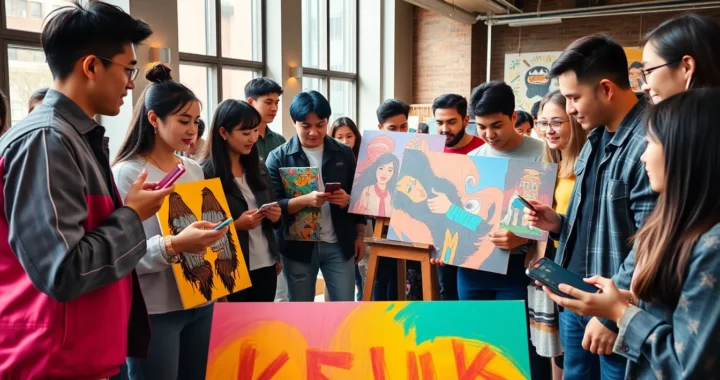Міуздгі: Unraveling Its Mysteries and Modern Relevance

Ever wondered about the intriguing world of мiуздгі? It’s a term that might sound exotic, but it packs a punch in both history and contemporary culture. Imagine a topic that weaves through time like a well-crafted tapestry, blending intriguing stories with unexpected twists. In this exploration, we dive deep into its roots and ask: what does мiуздгі really mean today? In a journey that promises laughs and insights, let’s uncover the secrets behind this fascinating term.
Міуздгі

Міуздгі has a rich historical tapestry that warrants exploration. Historical records suggest its origins can be traced back centuries, intertwined with various cultures and civilizations. Originally utilized in specific societal functions, this term marked significant milestones in the lives of those who used it. In ancient texts, it appears frequently, underlying the essential practices of the time. Historians have debated its exact applications, revealing contrasts in interpretations that show the evolution of its meaning.
Notably, during significant epochs, мiуздгі acted as a linchpin for communities, denoting status, heritage, or even power dynamics. Let’s focus on one era: the medieval age, where it held considerable weight in determining social hierarchies. Each mention pulsated with the heartbeat of the people, echoing their hopes and challenges.
Fast forward to today, experts are still piecing together this historical jigsaw, attempting to bridge the knowledge gaps that have emerged over time. The continued interest in its origins reveals a strong public desire to connect with the past.
Cultural Representations in Literature and Art
The portrayal of міуздгі in literature and art serves as fascinating windows into its cultural resonance. Renowned authors and artists from various eras embraced the term. Through allegories and symbolism, they paired characters and narratives with this term, infusing their works with vibrant meaning.
For instance, several contemporary authors have wielded the concept of мiуздгі as a metaphor for conflict and resolution, expertly intertwining it with themes of identity. Artists, on the other hand, have sought to capture its essence in visual form. Paintings and sculptures often embody the spirit of мiуздгі, showcasing its multifaceted role in society.
Also, cultural rituals surrounding міуздгі have been depicted in numerous mediums, reinforcing its relevance throughout the ages. This continuous dialogue between art and the term enriches public understanding, ensuring that it remains prominent in cultural discussions.
Modern Interpretations and Adaptations
In today’s world, міуздгі is experiencing a modern renaissance. Artists, writers, and thought leaders are taking fresh approaches to explore its implications, breathing new life into a term that stands the test of time. Social media platforms are buzzing with discussions offering diverse interpretations, showcasing its adaptability.
A prime example is how influencers and creators leverage міуздгі in digital narratives. Through memes, videos, and blogs, they encapsulate its essence, making it accessible to younger audiences. Content creators frequently engage in debates about its relevance, allowing for dynamic conversations that echo in the modern zeitgeist.
It’s not just in social media: academic circles are equally invigorated. Scholars are reassessing historical texts, looking at міуздгі through contemporary lenses, and understanding its fluid nature in a society that constantly evolves.
The Role of Міуздгі in Contemporary Society
In contemporary society, міуздгі plays a pivotal role in shaping identities and fostering dialogue around shared experiences. It serves not only as a term but as a concept that connects various threads of human interaction. Through community gatherings and discussions, individuals explore its personal significance, offering a platform for both reflection and action.
Organizations and institutions often harness the term during cultural festivals, leading to broader awareness and appreciation. By contextualizing міуздгі within social initiatives, it fosters a sense of unity, galvanizing individuals to engage meaningfully.
Influential figures also rally around міуздгі, championing its causes and advocating for relevance in discussions traditionally overlooked. This synergy between public figures and the community amplifies the visibility of міуздгі, ensuring it remains a touchstone for ongoing dialogue.
Challenges and Controversies Surrounding Міуздгі
While the discussion around міуздгі is vibrant, it’s essential also to acknowledge the challenges and controversies surrounding it. Different interpretations can lead to misunderstandings, igniting heated debates about its appropriations in modern contexts. Those discussions range from cultural sensitivities to ethical considerations.
Some argue that the term has been diluted or misrepresented in popular culture, leading to concerns over authenticity. Critics often point out how commercialization can obscure its historical significance, watering down essential narratives.
But, these controversies can also serve as valuable opportunities for growth and improvement. They prompt deeper explorations into the nuances of міуздгі, fostering dialogues that drive critical thinking and greater understanding. Through addressing these dissonances, society can work towards a more informed interpretation of міуздгі.
Future Prospects and Developments
What does the future hold for міуздгі? As society continues to evolve, so too will interpretations of this compelling term. The digital age offers unprecedented opportunities for engaging with міуздгі across platforms. It invites innovative explorations that can adapt to changing cultural landscapes.
Anticipated developments suggest a further intertwining of technology with traditional understandings. Virtual reality and interactive storytelling may offer immersive experiences, enhancing how people connect with the term. Workshops and educational initiatives focusing on міуздгі promise to deepen public interest and awareness.
Besides, as newer generations engage with міуздгі, they will undoubtedly contribute fresh perspectives that can challenge and reshape established narratives. The ongoing dialogue around it will lead to continued relevance and resonance in a fast-paced world.

 Kdraydink: Unraveling the Fascinating Evolution and Cultural Impact
Kdraydink: Unraveling the Fascinating Evolution and Cultural Impact  Cute00kiara: The Rise of a Digital Star
Cute00kiara: The Rise of a Digital Star  Tayfay1234: The Future of Online Identity
Tayfay1234: The Future of Online Identity